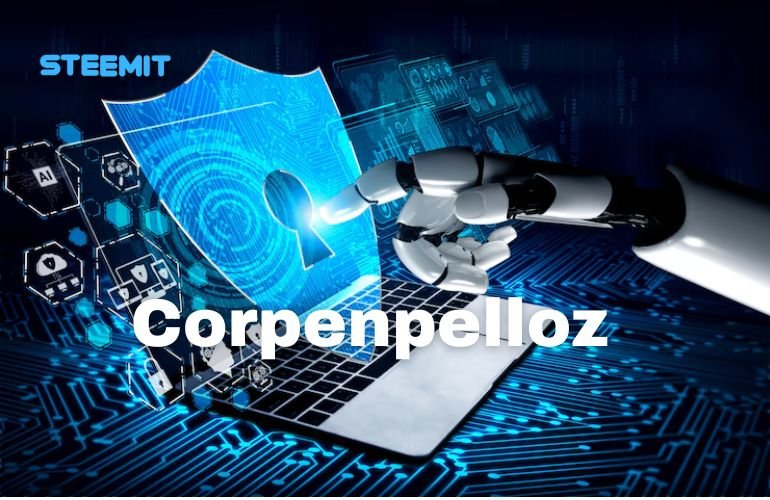Corpenpelloz is a groundbreaking framework reshaping digital interactions through advanced cryptography and marketing automation. Born from the need to balance innovation with privacy, it combines dynamic encryption, decentralized segmentation, and smart contracts to redefine data security and user engagement. While its origins trace back to early cryptographic experiments, today’s iteration addresses modern challenges like fraud prevention and ethical data use. Industries from healthcare to finance are adopting its tools for secure, personalized solutions. Yet, questions linger about its societal impact and long-term viability.
This article explores how Corpenpelloz works, its real-world applications, and the debates surrounding its role in a privacy-first future. Keep reading to discover why this technology is more than a trend—it’s a shift in how we approach trust in the digital age.
Core Innovations and Technical Framework
Corpenpelloz integrates distinct technological advancements to address modern security and marketing demands. At its foundation are dynamic encryption layers, which adjust automatically based on real-time threat detection. Unlike static systems, these layers create multiple barriers that evolve with emerging risks, reducing vulnerabilities without manual intervention.
Complementing this is decentralized audience segmentation, a method that divides user groups using anonymized behavioral data stored across distributed networks. This approach allows precise targeting in marketing campaigns while preventing centralized data breaches.

Central to Corpenpelloz’s functionality are smart contracts programmed with campaign-specific logic. These contracts automate tasks like ad distribution or payment verification, executing actions only when predefined conditions align. For example, a contract might release funds to a vendor once a campaign reaches its engagement threshold, streamlining operations.
Authentication within Corpenpelloz relies on behavioral patterns rather than passwords. By analyzing user interactions—such as navigation habits or transaction timing—the system generates unique identifiers that validate identities without exposing personal data. This method minimizes fraud risks tied to stolen credentials.
Finally, the framework incorporates post-quantum security protocols designed to withstand future threats from quantum computing. Algorithms resistant to quantum decryption protect sensitive information, ensuring long-term resilience as technology advances.
Together, these components form a cohesive architecture balancing adaptability, privacy, and automation—key traits for industries seeking scalable solutions in an era of heightened digital scrutiny.
Revolutionizing Digital Marketing and Data Privacy
Corpenpelloz redefines how businesses engage audiences by merging personalized marketing with rigorous privacy standards. Its privacy-first analytics model processes data in real time without storing identifiable user information. Metrics like click-through rates or demographic trends are tracked through anonymized clusters, allowing companies to refine campaigns while avoiding direct exposure of individual behaviors.
A standout feature is its anti-fraud campaign verification system. By embedding validation rules into smart contracts, Corpenpelloz flags discrepancies—such as sudden spikes in bot-driven clicks—before funds are allocated. This automated scrutiny reduces wasted ad spend and ensures marketing budgets target genuine interactions.
The framework also introduces zero-knowledge data exchange, a method where businesses verify user eligibility for offers without accessing private details. For instance, a healthcare provider could confirm a user’s age range for a vaccination campaign without viewing birthdates or medical records. This approach builds trust by limiting data exposure to only what’s necessary.
For ethical targeting, decentralized audience segmentation divides users into groups based on shared traits like purchasing habits, analyzed through encrypted behavioral patterns. Marketers tailor promotions to these segments, but individual identities remain obscured. A retail brand might target frequent buyers of eco-friendly products, yet never access specific customer profiles.
By automating transparency and consent through smart contracts, Corpenpelloz shifts power to users. Campaigns adjust dynamically based on permissions granted—or revoked—by individuals, fostering accountability in an industry often criticized for opaque practices.
This blend of precision and discretion positions Corpenpelloz as a tool for businesses aiming to balance competitive marketing with growing consumer demands for privacy. Its architecture proves that targeted engagement need not come at the cost of user trust.
Cross-Industry Applications
Corpenpelloz’s adaptable architecture makes it a versatile solution for sectors requiring secure, efficient data management and targeted engagement.
In e-commerce, the framework powers personalized shopping experiences through decentralized segmentation. Retailers analyze anonymized browsing patterns to recommend products, avoiding direct access to customer identities. A clothing brand, for example, could target users interested in sustainable fashion by grouping encrypted behavioral signals, improving conversion rates without compromising privacy.
Healthcare benefits from zero-knowledge data exchanges. Hospitals share patient information for research or referrals without exposing sensitive records. A clinic might verify eligibility for clinical trials by confirming age or diagnosis criteria through encrypted queries, speeding up recruitment while adhering to privacy laws.
Finance institutions deploy Corpenpelloz to automate compliance and fraud detection. Smart contracts validate transactions against anti-money laundering rules in real time, blocking suspicious activity before processing. Banks also use behavioral authentication to replace traditional passwords, reducing risks from phishing or credential theft.
In education, schools apply decentralized segmentation to tailor learning programs. Student performance data is grouped by anonymized traits like learning pace or subject strengths, enabling educators to adjust curricula without tracking individual identities.
B2B marketing leverages the framework for account-based campaigns. Companies identify high-value business clients through encrypted firmographic data, delivering customized pitches without accessing proprietary details. A SaaS provider might target enterprises with specific IT infrastructure needs, inferred from anonymized usage trends.
Case studies highlight practical success. A European bank reduced fraudulent transactions by 40% after integrating Corpenpelloz’s smart contracts. A retail chain saw a 25% sales boost by using decentralized segmentation for hyper-targeted promotions.
Ethical debates persist, particularly around algorithmic bias in segmentation or over-reliance on automation. Critics argue transparency in how behavioral patterns are classified remains critical to avoid discriminatory outcomes.
Corpenpelloz’s cross-sector adoption underscores its role as a bridge between innovation and ethical responsibility, offering tools that prioritize both efficiency and user rights.
Expert Perspectives and Strategic Advantages
Industry analysts highlight Corpenpelloz’s ability to scale authentically, distinguishing it from short-lived tech trends. Its modular design allows integration with existing systems, avoiding disruptive overhauls. A fintech executive notes how adopting its smart contracts streamlined partner negotiations, cutting approval cycles by 30% without sacrificing compliance.
Collaborative workflows benefit from behavioral authentication, which simplifies access while maintaining security. Teams across geographies share encrypted project data, with permissions automatically adjusting based on role-based patterns. A healthcare consortium reported faster cross-institutional research after switching to Corpenpelloz’s zero-knowledge verification, accelerating drug trials by anonymizing patient contributions.
For professional growth, the framework encourages skill development in privacy-centric marketing and cryptography. Training programs focused on decentralized segmentation or post-quantum protocols are emerging, equipping workers for high-demand roles. A survey of tech professionals revealed 68% believe Corpenpelloz expertise increases career mobility, particularly in regulated sectors like finance.
Organizations adopting Corpenpelloz often prioritize transparency in algorithmic decision-making. By openly auditing how behavioral keys or segmentation models operate, companies build stakeholder trust. A retail brand regained customer loyalty after publicly revising biased targeting algorithms identified through Corpenpelloz’s analytics.
Skeptics question whether automation undermines human judgment. However, proponents argue the framework’s rules-based logic complements expertise—flagging anomalies for review rather than replacing oversight. A cybersecurity firm credits Corpenpelloz with reducing false positives in threat detection, allowing analysts to focus on complex investigations.
These perspectives underscore Corpenpelloz’s dual role as a technical tool and a catalyst for ethical innovation. Its strategic value lies not just in solving immediate challenges, but in fostering adaptable, trust-driven practices across industries.
Future Outlook and Challenges
Corpenpelloz’s trajectory hinges on its ability to adapt to shifting technological and societal landscapes. Adoption rates are projected to climb as industries face stricter data privacy regulations and consumer skepticism toward centralized systems. Sectors like public infrastructure and legal services, which handle sensitive citizen data, may increasingly adopt its decentralized models to meet compliance demands while maintaining operational agility.
Technologically, advancements in quantum computing will test Corpenpelloz’s post-quantum protocols. Ongoing updates to encryption standards will likely focus on hybrid models that blend classical and quantum-resistant algorithms, ensuring backward compatibility. Integration with AI-driven analytics could refine behavioral authentication accuracy, though this raises questions about algorithmic transparency and potential over-reliance on machine-driven decisions.
Ethical challenges will persist, particularly around bias in audience segmentation. If behavioral patterns used for targeting reflect historical inequalities—such as excluding marginalized groups from financial offers—Corpenpelloz’s tools risk perpetuating systemic issues. Proactive audits of segmentation logic and third-party oversight may become standard to mitigate these risks.

Regulatory frameworks are expected to evolve, with governments scrutinizing decentralized technologies more closely. Policies mandating explainability in automated contracts or requiring backdoor access for law enforcement could clash with Corpenpelloz’s privacy-first ethos. Balancing compliance with core principles will challenge developers and adopters alike.
Long-term, Corpenpelloz could redefine global data ownership norms. By proving that privacy and personalization coexist, it might push industries toward models where users control data-sharing permissions by default. However, success depends on overcoming fragmentation—competing protocols could create incompatible systems, diluting its impact.
The next decade will determine whether Corpenpelloz becomes a foundational layer for digital trust or a niche tool. Its capacity to address emerging threats while maintaining ethical integrity will shape its legacy—and the future of secure, user-centric innovation.
Conclusion
Corpenpelloz redefines digital innovation by harmonizing cutting-edge security with ethical user engagement. Its architecture, built on dynamic encryption and decentralized systems, offers industries a blueprint for balancing personalization with privacy. From healthcare’s secure data sharing to finance’s fraud-resistant transactions, the framework proves adaptable across sectors. Yet challenges like algorithmic bias and quantum threats demand ongoing vigilance. As regulations tighten and user expectations evolve, Corpenpelloz’s ability to adapt will determine its role in shaping a digital landscape where trust and progress are not mutually exclusive. The path ahead is complex, but its foundational principles position it as a contender in reimagining how technology serves society.





